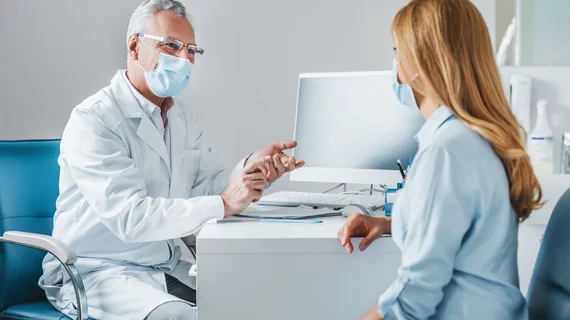Radiologist-recommended testing for primary hyperparathyroidism improves diagnosis
Radiologist-recommended biochemical evaluation for patients with incidentally detected enlarged parathyroid glands can prompt earlier diagnosis, according to new data in the American Journal of Roentgenology.
In the study, more than half of patients who followed through with radiologist recommendations for further evaluation for primary hyperparathyroidism (PHPT) were diagnosed as having either PHPT or secondary primary hyperparathyroidism [1].
Long-term PHPT can lead to osteoporosis, kidney disease and cardiovascular disease, making earlier diagnosis a goal that could potentially improve outcomes, authors of the new paper noted.
“Existing gaps in primary hyperparathyroidism diagnosis and treatment have prompted calls for systemic change in the approach to this disease,” corresponding author Paul M. Bunch, MD, with the Department of Radiology at Wake Forest University School of Medicine, and colleagues explained. “One proposed change is opportunistic assessment for enlarged parathyroid glands on routine CT examinations, to target biochemical testing to individuals most likely to have undiagnosed PHPT.”
For their study, the authors identified 39 patients from their facility who received a radiologist’s recommendation to undergo biochemical testing following a CT scan that was performed for reasons other than suspected parathyroid disease. Patients’ medical records were reviewed to determine who underwent further testing and what the resultant outcome was for those who completed biochemical evaluation.
Out of those 39 patients, 13 underwent biochemical testing. Three were diagnosed with PHPT and four with secondary primary hyperparathyroidism. One was found to have hypercellular parathyroid tissue following histopathologic evaluation.
Though the study had a small sample size, the authors maintain that an opportunistic assessment could facilitate earlier diagnosis and, thus, more prompt treatment of PHPT.
In an accompanying editorial, author Christie M. Malayil Lincoln, MD, with Baylor College of Medicine, suggested that such opportunistic screenings enable radiologists to further “provide value for patients and healthcare systems.”
“The study overall presents a representative example of the opportunity to apply imaging to add value to patient care,” Malayil Lincoln noted [2].
The study abstract is available here, and the editorial here.

